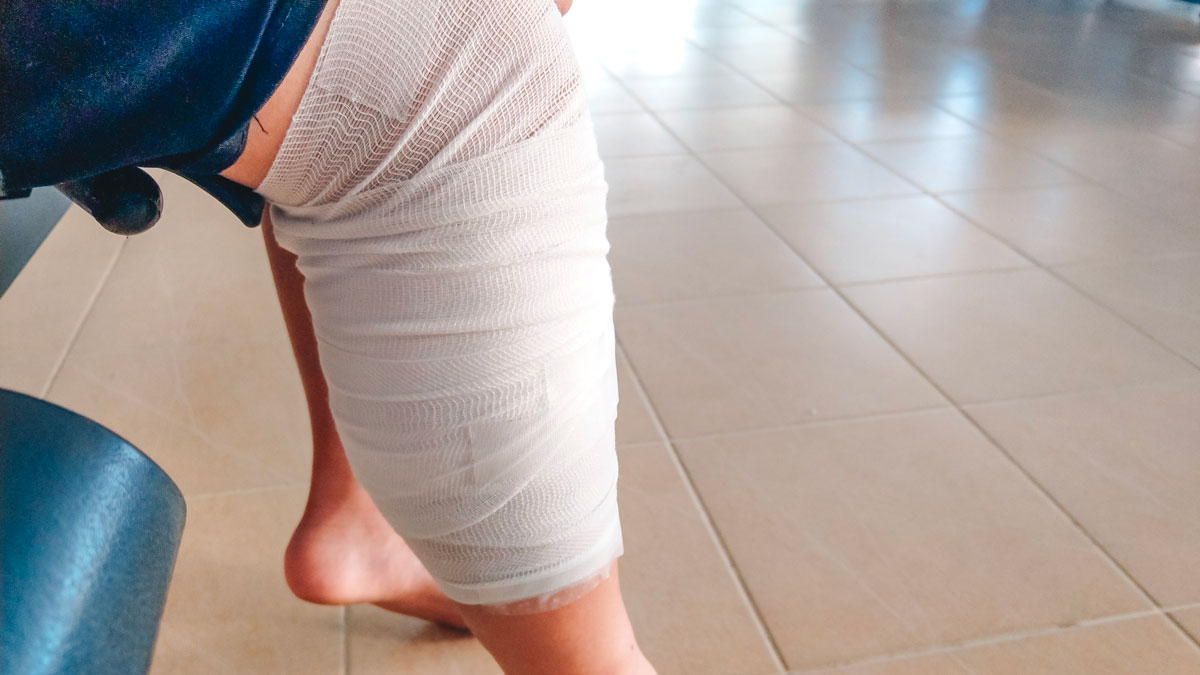Mantener niveles óptimos de humedad resulta clave para permitir un buen proceso de curación de heridas, especialmente las de carácter crónico. Un nuevo estudio presenta un vendaje inteligente, que puede medir y transmitir en forma inalámbrica, los datos del nivel de humedad de la herida en tiempo real, sin necesidad que la misma sea removida, lo que habitualmente termina retardando el proceso de curación.
Maintaining optimal moisture levels could be key in allowing chronic wounds to heal. However, clinicians currently have no way to check moisture levels without removing a bandage, potentially disrupting the healing process. A new study presents a smart bandage that can measure and wirelessly transmit wound moisture data in real time. The technology could be a useful tool in treating chronic wounds.
How can doctors make sure a dressed wound is healing without taking off the bandage? This is a conundrum, because removing a bandage can disrupt the healing process. Technology presented in a new study in open-access journal Frontiers in Physics could help.
This new ‘smart bandage’ contains a sensor that can very sensitively measure wound moisture levels and then transmit the data to a nearby smartphone, without requiring doctors to remove the bandage. In the future, by changing the geometry and materials in the bandage, the researchers may be able to fine tune it to suit different types of wounds. The technology could help doctors to monitor wounds more easily and successfully.
Chronic wounds can be a source of significant suffering and disability for patients who experience them. Getting such wounds to heal is tricky and there are many factors that can affect wound healing, such as temperature, glucose levels, and acidity. However, one of the most important is moisture levels. Too dry, and the tissue can become desiccated; too wet, and it can become white and wrinkly, as it does in the bath. Both these situations disrupt the healing process.
However, if a doctor wants to check the moisture levels of a wound then they need to remove the bandage, potentially damaging the delicate healing tissue. These issues have inspired this latest smart bandage, as a way to monitor wound moisture levels non-invasively. The choice of materials was a challenge, as bandages need to be biocompatible, disposable and inexpensive.
How it works
To achieve this, the researchers applied a conductive polymer called poly(3,4-ethylenedioxythiophene):polystyrene sulfonate (PEDOT:PSS) onto a gauze using a technique called screen printing, and then incorporated the gauze with commercially available bandage materials. The idea is that changes in the moisture level of the wound cause a change in an electrical signal measured by the sensor.
“PEDOT:PSS is an organic semiconducting polymer that can be easily deposited on several substrates as a standard ink,” explained Dr Marta Tessarolo of the University of Bologna, an author on the study. “We also incorporated a cheap, disposable and bandage-compatible RFID tag, similar to those used for clothing security tags, into the textile patch. The tag can wirelessly communicate moisture level data with a smartphone, allowing healthcare staff to know when a bandage needs to be changed.”
To test their bandages, the researchers exposed them to artificial wound exudate, which is the liquid that seeps from wounds, and also tested different bandage materials and shapes. They found that the bandage was highly sensitive, providing drastically different readings between dry, moist and saturated conditions, suggesting it could be a valuable tool in wound management.
“We developed a range of bandages with various layers and different absorption properties and characteristics,” said Dr Luca Possanzini, another author from the University of Bologna. “The idea is that each type of wound could have its own appropriate dressing, from slowly exuding wounds to highly exuding wounds, such as burns and blisters. However, we will need to further optimize the sensor geometry and determine the appropriate sensor values for optimal healing before we can apply our technology to various types of wounds.”
REPUBLISHING GUIDELINES: Open access and sharing research is part of Frontiers’ mission. Unless otherwise noted, you can republish articles posted in the Frontiers news blog — as long as you include a link back to the original research. Selling the articles is not allowed.
Fuente: https://blog.frontiersin.org


